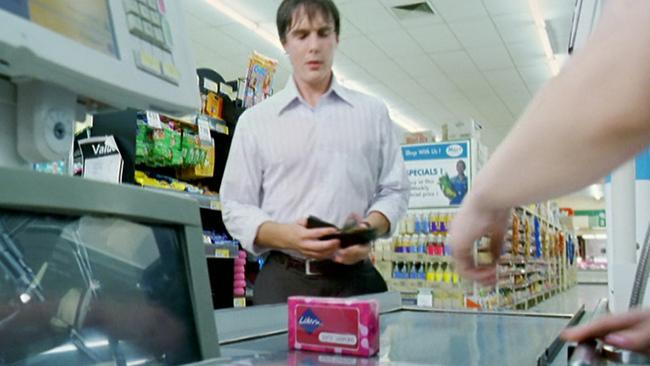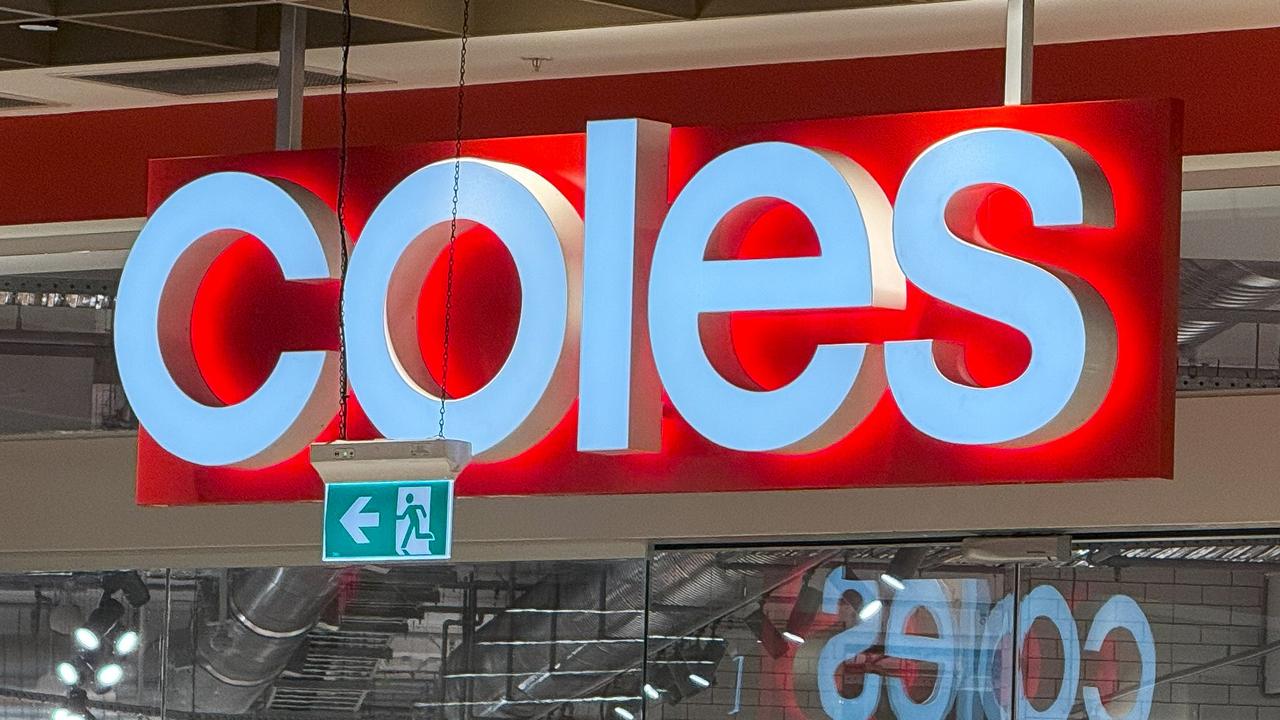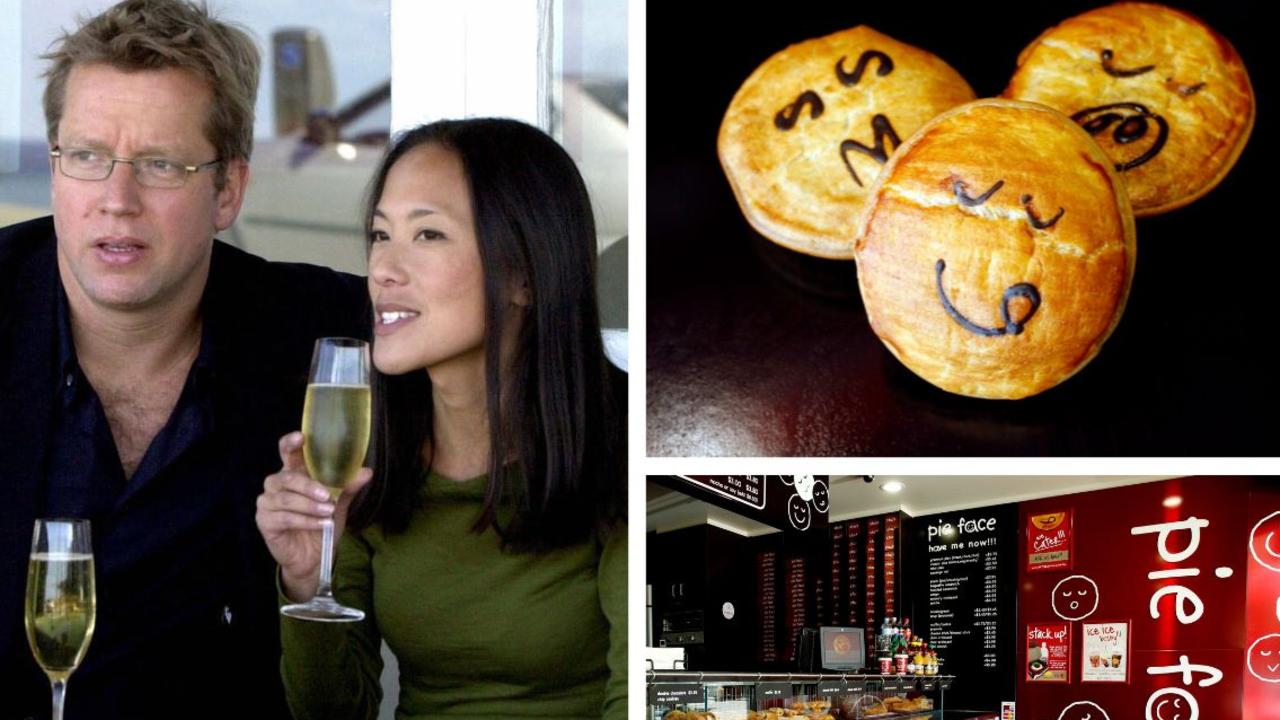Coles targets tampons in price war
COLES has kicked off a new round in the great supermarket price war by slashing prices on a few crucial products.

COLES has kicked off the latest round of price wars in the $89 billion grocery sector with cuts of nearly 30 per cent to women’s personal care products including tampons, pads and liners.
From today, the supermarket giant has added 36 Libra and Tena women’s products to its so-called ‘Every Day’ low pricing list of more than 2500 items.
Libra Slimpons Tampons Super 16-pack saw the biggest cut of 28 per cent, down from $5.60 to $4. Libra Liners Purse Pack 28-pack have been reduced from $3.90 to $3, or 23 per cent.
Libra Pads Ultra-Thin & Extra Pads 10 to 14-pack is down 18 per cent from $5.90 to $4.80, Tena Pads Ultra-Thin Mini 20-pack is also down 18 per cent from $6.60 to $5.40, and Tena Pads Normal 12-pack is down 12 per cent from $6.20 to $5.40.
“Personal care products make up an essential part of many of our customers’ baskets, so it’s important for us to make these products more affordable,” Coles general manager non-food Karin Zimmermann said.
A Woolworths spokesman confirmed the supermarket would price match.
“Woolworths is committed to keeping the prices of hundreds of everyday products across our stores at a great low price, backed by our investment of more than $400 million in price reduction since early last year,” he said.
“As part of our ‘Low Price, Always’ promise we will be reducing prices across leading brands in our female hygiene range including everyday items like Libra Tampons Regular 16 pack, now $4; Tena Liners 30 pack, now $5; and Tena Lady Pads Extra 10 pack, now $5.40. Customers can know that when they shop at Woolworths they’ll always get great value.”
It follows earlier price wars between the Coles and Woolworths targeting Colgate toothpaste, fresh-baked bread, juice, rice, Kleenex tissues, roast chickens, batteries and other health and beauty products.
“By focusing on the products our customers buy most, we are making a real difference to the cost of living for Australian households,” Ms Zimmermann said.
“We know customers want to save money every time they shop so that’s why we’re moving more products every week onto Every Day low pricing, which means they can budget more easily and don’t have to wait for a special to buy at a great price.”
Asaleo Care, which manufactures both Libra and Tena, is apparently shouldering the cost of the price reductions. A Coles spokeswoman said she couldn’t reveal “any numbers but can say that we’ve worked closely with our suppliers to be able to offer these great prices to our customers”.
Other popular brands like Carefree, U by Kotex, Moxie and Tampax are not included in the price cuts. Last May, a Change.org petition and a fiery question on Q&A from Sydney university student Subeta Vimalarajah launched a campaign to remove the so-called “tampon tax” on feminine hygiene items.
When the GST was first introduced in 2000, “essential” items were supposed to be excluded from the 10 per cent cost increase.
But sanitary products such as tampons and pads currently include GST. Other health products, such as condoms, lube, sunscreen and nicotine patches, are considered essential and are GST-free.
Last year, then-Treasurer Joe Hockey conceded that feminine hygiene products are essential, and promised to raise the issue with the states and territories at their next meeting.
“Do I think sanitary products are essential? I think so, I think so,” Mr Hockey said on Q&A.
But then-Prime Minister Tony Abbott put a dampener on those expectations. “It’s certainly not something that this government has a plan to do,” Mr Abbott said.
“We cannot change the GST without the states and territories. My preference is that the states and territories should make up their minds whether they want any changes to the GST.”
According to market research firm IBISWorld, the sanitary paper product manufacturing sector in Australia is worth $2.1 billion. It is dominated by Kimberly-Clark (38.4 per cent), Asaleo Care (20.7 per cent) and ABC Tissue Products (18.5 per cent).
EARNINGS SEASON
Last month, Coles delivered another strong sales result. Wesfarmers’ food and liquor sales for the three months to March 31 rose by 5.9 per cent to $7.518 billion, from $7.097 billion for the prior corresponding period, while total Coles’ sales improved 3.2 per cent.
“Our customers are our principal focus,” Coles managing director John Durkan said. “Our continued delivery on ‘Every Day’ value is highlighted by price drops on products important to the family basket, such as roast chicken, Colgate toothpaste and Kleenex tissues.
“This ongoing commitment to customers has delivered continued sales growth through the quarter and culminated in more customers shopping with us over the Easter period.”
Coles brought food and liquor prices down 2 per cent during the quarter — the steepest drop since the September 2014 quarter — bringing total price deflation to 1.4 per cent for the financial year to date.
Woolworths continued to struggle in the third-quarter, posting a 0.9 per cent decline in food and liquor sales when adjusted to take Easter into account. Non-adjusted, Woolworths’ sales edged 0.4 per cent higher to $10.7 billion.
The 0.9 per cent comparable sales decline contrasts with the 0.2 per cent increase in comparable sales during the same quarter a year ago.
It is also worse than the 0.6 per cent comparable sales decline recorded in the second quarter but slightly better than the first quarter’s one per cent fall.
The latest disappointing result shows the retailer is struggling to turn the business around despite investing more than $400 million in lowering grocery prices since the second half of FY2015, with the retailer continuing to leak market share to Coles and Aldi.
Woolworths said this week it would invest a further $150 million into lowering grocery prices. “We are undertaking significant cost reductions to improve base profitability while restructuring the business to build up our direct sourcing and design capabilities to ensure that our new range resonate with our customers,” a Woolworths statement to the ASX said.
PAIN AND GAIN
Last month, credit rating agency Moody’s warned of more pain to come for Coles and Woolworths as German discounter Aldi ramps up its store rollout in South Australia and WA.
“Aldi’s significantly increased rate of expansion, expected material increase in marketing expenditure, and forecast rise in basket size are all credit negative for the main line supermarkets,” Moody’s vice president Ian Chitterer wrote.
It came after research company Roy Morgan released data showing Aldi had grown its share of the supermarket sector from 11.6 per cent in March 2015 to 12.1 per cent in December.
“The supermarket industry in Australia has been under increasing pressure from the structural changes driven by Aldi’s discount format over the past few years,” Mr Chitterer wrote.
“Industry margins are also being driven lower (Coles is the exception), as was seen in the UK when discounters like Aldi started to gain market share. Shoppers are far less loyal to any particular store brand, and value is the key driver of their behaviour.”
According to Roy Morgan, in an average four-week period, 5.3 million consumers shop at Aldi, 10.5 million at Woolworths, 10 million at Coles, just more than four million at IGA and almost four million at other supermarkets.
Around 37 per cent of these shoppers visited at least one Coles store, one Woolworths store and one other supermarket during this time.
Aldi has a 12.1 per cent dollar market share but is visited by around 37 per cent of total shoppers, compared with 69 per cent at Coles and 72.5 per cent at Woolworths.
In other words, because Aldi’s prices are substantially cheaper, its basket size will always be lower, effectively understating its dollar market share for any given basket of goods.
Aldi customers start out purchasing basics such as cleaning products, pasta, rice, and sugar, then migrate to other dry grocery items and finally fresh food.
“Herein lies the potential risk for Woolworths and Coles,” Mr Chitterer wrote. “As Aldi expands and its customer base matures, we expect to see its basket size continuing to increase.”
— with AAP



